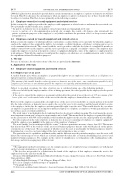Page 656 - SAIT Compendium 2016 Volume2
P. 656
IN 77 Income Tax acT: InTeRPReTaTIon noTes IN 77
2008 the legislation was amended to provide that in certain circumstances an employee’s private or domestic use will not be taxed. This Note discusses the circumstances when an employee’s private or domestic use of these bene ts will not be subject to taxation. This Note focuses primarily on the following scenarios:
2.1 Employer-owned (or leased) equipment and related services
In this scenario the employer provides the employee with equipment or related services and incurs the associated cost. Two potentially taxable bene ts arise, namely –
• the private or domestic use of an employer-owned or provided asset [paragraph 2(b)]; and
• access to and use of a telecommunication network (for example, line rental, call charges, data downloads) for
private or domestic purposes at the employer’s cost [which constitutes the provision of free or cheap services under paragraph 2(e)].
2.2 Employee-owned (or leased) equipment and related services
In this scenario the employee would typically have entered into a contract with a service provider for which the employee (and not the employer) has acquired the right to, for example, a cellular telephone (cell phone) or laptop and access to a telecommunication network. The contract with the service provider could take the form of a standard 24-month (or similar) contract between the employee and the service provider or a ‘prepaid’ (or similar) contract. The employer may require the employee to use his or her private contract or equipment during the course of the employee’s employment for work purposes. Typically the employer would grant the employee an allowance or a reimbursement in order to defray the expenditure incurred for business purposes.
3. The law
For ease of reference, the relevant sections of the Act are quoted in the Annexure. 4. Application of the law
4.1 Employer-owned equipment and related services
4.1.1 Right of use of an asset
A taxable bene t arises when an employee is granted the right to use an employer’s asset (such as a cell phone or a laptop) for private or domestic purposes.
Subject to speci ed exceptions, the value of private use is calculated using one of the following methods –
• if the asset is held by the employer under a lease or hiring agreement, the rental payable by the employer for the period
of use; or
• if the asset is owned by the employer, an amount calculated for the period of use at the rate of 15% per annum of the
lesser of the cost* or the market value of the asset at the date the employee obtained the use of the asset.
However, if the employee is granted the sole right of use of the asset over its useful life or a major portion of its useful life, the value of private or domestic use is equal to the cost of the asset to the employer and the bene t is held to accrue to the employee on the date the employee was rst granted the right to use the asset.† This would often be the case when an employee is granted the use of an employer-purchased laptop or cell phone as employees would generally have the use of these assets over their useful lives.
The word ‘major’ is not de ned in the Act and must therefore be given its ordinary meaning. The word means the greater, more important or main part‡ or larger in extent, number and so forth.§ This means that if the employee is granted the right to use the asset for more than 50% of its useful life, it will constitute the right to use the asset for a major portion of its useful life.
No value is placed on the value of private or domestic use of an asset consisting of telephone or computer equipment¶ which the employee uses mainly for the purposes of the employer’s business.**
The word ‘mainly’ has been interpreted by the courts†† to mean a quantitative measure of more than 50%. This means that if more than 50% of the total use of the asset is for business purposes then no value will be placed on the private or domestic use of that asset. The assessment of whether or not the asset is used mainly for business purposes must be determined on a case-by-case basis taking all the facts and circumstances into account.
The particular asset’s capabilities and functionality, and the different ways the particular employee uses the asset, will dictate the various aspects of use which are relevant and must be taken into account in determining if an asset is used mainly for business purposes. For example, in the context of smartphones, receiving phone calls, making phone calls, data usage and text messaging may all be relevant.
* The appropriate method to determine cost, for example speci c cost, weighted average or marginal cost, will depend on the facts and circumstances of the particular case.
† The Act does not provide for a deduction in the hands of the employee if that employee returns the asset to the employer before the end of its useful life.
‡ Concise Oxford English Dictionary. Edited by Catherine Soanes, Angus Stevenson. 11th ed. rev. New York: Oxford University Press, 2006.
§ Collins English Dictionary. 3rd ed. Glasgow: Harper Collins, 1991.
¶ See 1 for examples of different types of equipment.
** Paragraph 6(4)(bA).
†† Sekretaris van Binnelandse Inkomste v Lourens Erasmus (Eiendoms) Bpk 1966 (4) SA 434 (A).
The amount of the taxable bene t = value of private or domestic use of the asset – any consideration payable by the employee for such use or any amount spent by the employee on repairing and maintaining the asset.
648 saIT comPendIum oF Tax LegIsLaTIon VoLume 2


